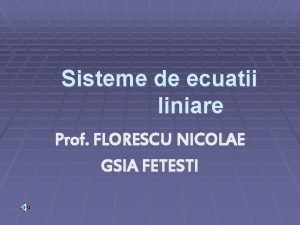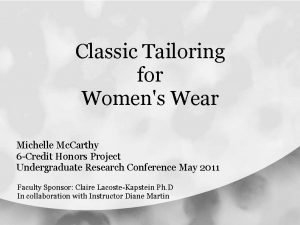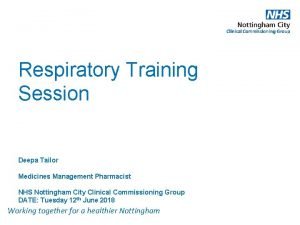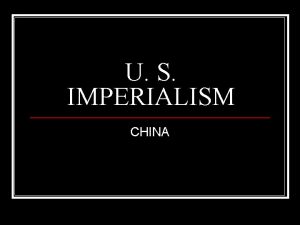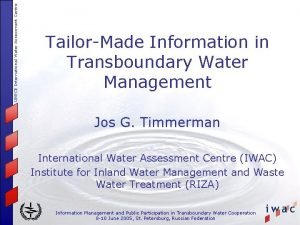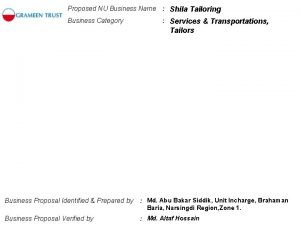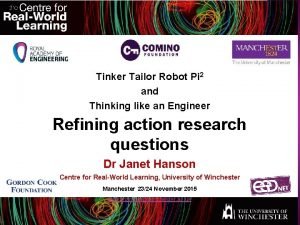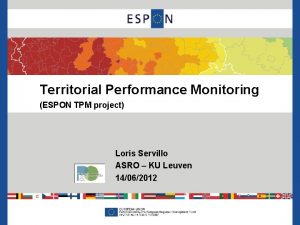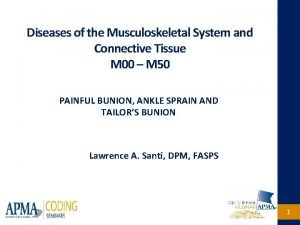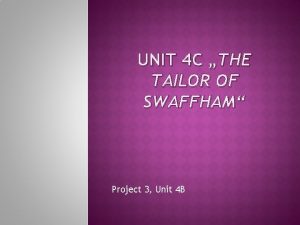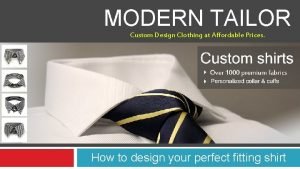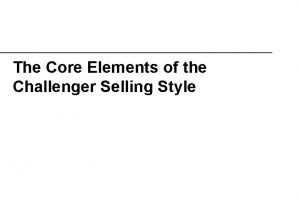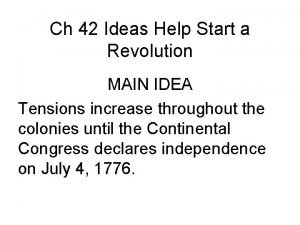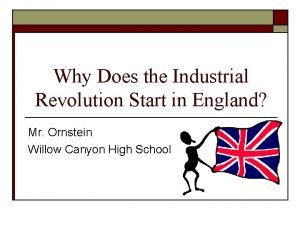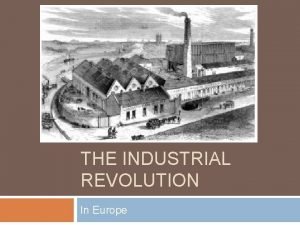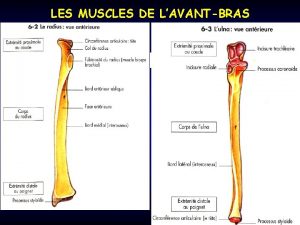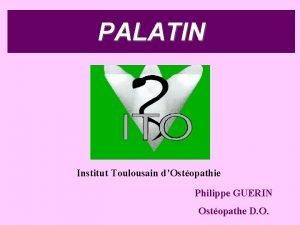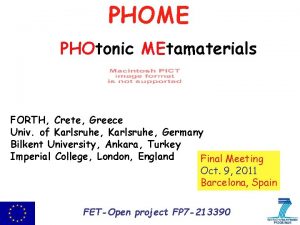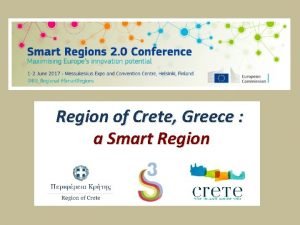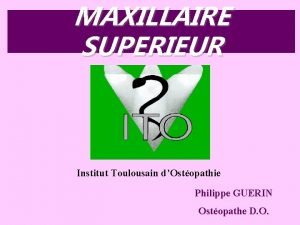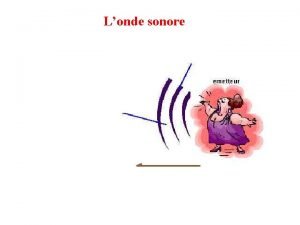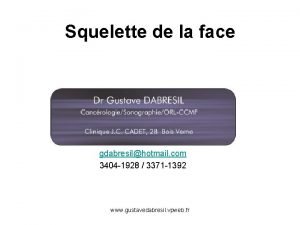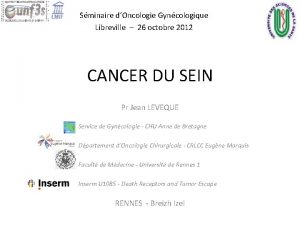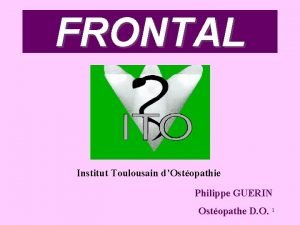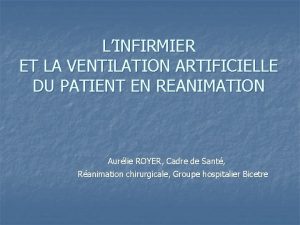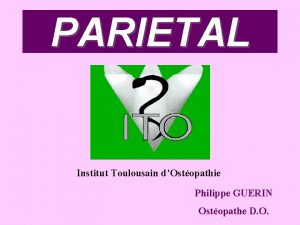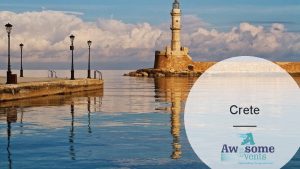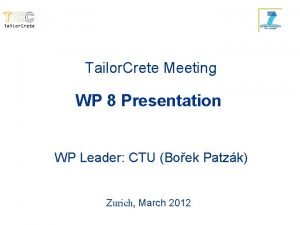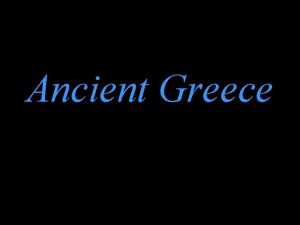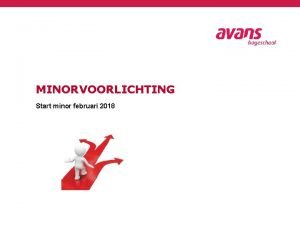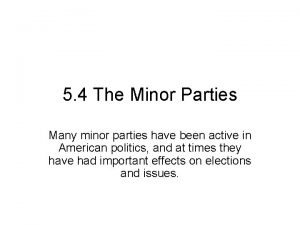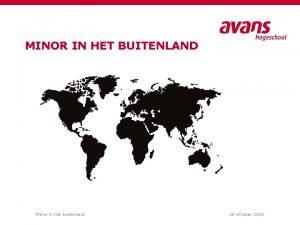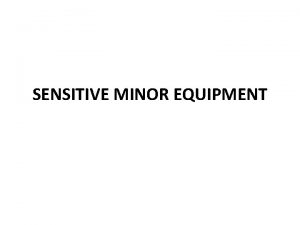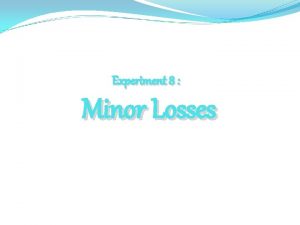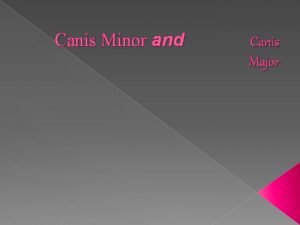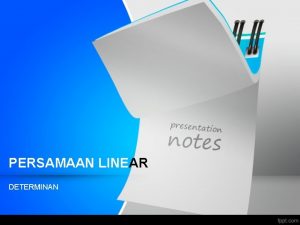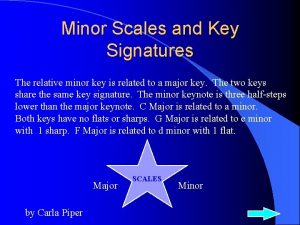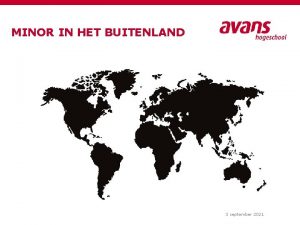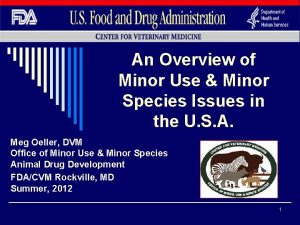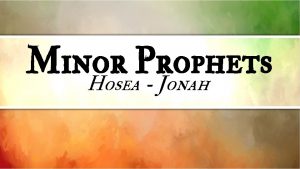Tailor Crete The start of a minor revolution


































- Slides: 34

Tailor. Crete The start of a minor revolution in the construction industry.

The most well known usage of concrete

Liquid stone – design freedom not for everyday use

Challenges - formwork

Challenges - reinforcement

New possibilities with Self compacting concrete (SCC)

New possibilities with robots

New possibilities with advanced 3 D digital tools

The main goal of Tailor. Crete is to develop and demonstrate an industrialised process for producing unique, tailor-made structures using a radically new and cost effective approach = production of singular Tailor. Made concrete structures at mass production costs. The concept involves both on-site and prefabricated elements and both load-carrying and facade elements.

Proof of concept in Denmark






MDF formwork

Pistons to tailor-make formwork

Foundry sand

Spraying formoil



Partners Architects/designers: ØSuperpool, Turkey (SME) ØDesign. To. Production, Switzerland (SME) Manufacturers concrete: ØUnicon, Denmark ØEl Caleyo, Spain (SME) Construction : ØDragados, Spain Raw material manufacturers: ØGrace, Germany ØBekaert, Belgium Robot supplier: ØGiben, Denmark (SME) Formwork suppliers: Ø Paschal, Denmark (SME) Research: ØDanish Technological Instsitute, Denmark (Co-ordinator) ØETH, Zurich ØChalmers, Sweden ØCzech University, Czech ØUniversity of Southern Denmark, Denmark

Time table: August 2009 - July 2013 Budget: 8, 5 million euro (5, 9 financed by EC)


A new bridge Oparno on the Prague – Dresden highway n n n Bridge under construction (20082010) Arch span 135 m Budget ~20 mil. € 25

Optimal position of cooling pipes n n 2. 3 m n n Arch casting continues through the whole year – varying temperature Massive casted arch segments could attain temperature over 90 o. C during summer which is unacceptable 12 cooling pipes inserted in the arch Two criteria Temperature bellow 70 o. C (possible delayed ettringite formation) Reasonable stress field and temperature gradients 26

Progress in 03/2009 27

Progress in 07/2009 28

Progress in 09/2009 29

Ready-mix concrete composition q Cement CEM I 42. 5 R Prachovice Ca. O 63. 2, Si. O 2 20. 8, Al 2 O 3 5. 8, Fe 2 O 3 3. 3, Mg. O 3. 6, K 2 O+Na 2 O 2. 1, free Ca. O 0. 88, SO 3 2. 85 Bogue: C 3 S 43. 76, C 2 S 26. 63, C 3 A 9. 79, C 4 AF 10. 04 Blaine fineness 320 m 3/kg q Concrete C 45/55 XF 2 Cement 431 kg/m 3 in which 5% SCM Water 178 kg/m 3, w/b = 0. 413 Aggregates 1785 kg/m 3 Superplasticizer 4. 19 kg/m 3 Silica fume 30 kg/m 3 Limestone 30 kg/m 3 Entrained/entrapped air 2. 8 % 30

Multiscale modeling approach . . . n Coupled cement hydration model on microscale with FEM on macroscale Eight cement microstructures 50 x 50 mm assigned to color regions Simulation runs ~30 minutes covering several weeks after casting Axis of symmetry # 1 nn #8 31

Multiscale simulation with coupled mechanics 1. No cooling 3. Optimized cooling 2. Original cooling 32 4. Stress distribution

Effect of pipe cooling in summer n Ambient air temperature 30 o. C 33

Effect of pipe cooling in winter n Ambient air temperature 5 o. C 34
 What is the minor arc
What is the minor arc Metoda matriceala exemple
Metoda matriceala exemple It's gotta start somewhere it's gotta start sometime
It's gotta start somewhere it's gotta start sometime Jump triage
Jump triage Mc tailoring
Mc tailoring Mrc scale
Mrc scale The imperialist tailor
The imperialist tailor Tailor pci
Tailor pci Tailor information
Tailor information How old asl
How old asl Tailoring business proposal
Tailoring business proposal Deepa tailor lawyer
Deepa tailor lawyer Tailor
Tailor Tpm tailor
Tpm tailor Tailor made promo
Tailor made promo Icd 10 tailors bunion
Icd 10 tailors bunion Tailor of swaffham
Tailor of swaffham Modern tailer
Modern tailer Challenger selling style
Challenger selling style Ideas help start a revolution
Ideas help start a revolution Why did the industrial revolution start in britain
Why did the industrial revolution start in britain John kay inventor
John kay inventor Septum du bras
Septum du bras Palatin
Palatin I phome 13
I phome 13 Lived on the island of crete
Lived on the island of crete Crete regions
Crete regions Trigone palatin
Trigone palatin Crête et creux
Crête et creux Mylo hyoidien
Mylo hyoidien Crete de duret
Crete de duret Apophyse orbitaire externe
Apophyse orbitaire externe Ancient greece balkan peninsula
Ancient greece balkan peninsula Ventilation artificielle
Ventilation artificielle Ligne courbe temporale supérieure
Ligne courbe temporale supérieure

